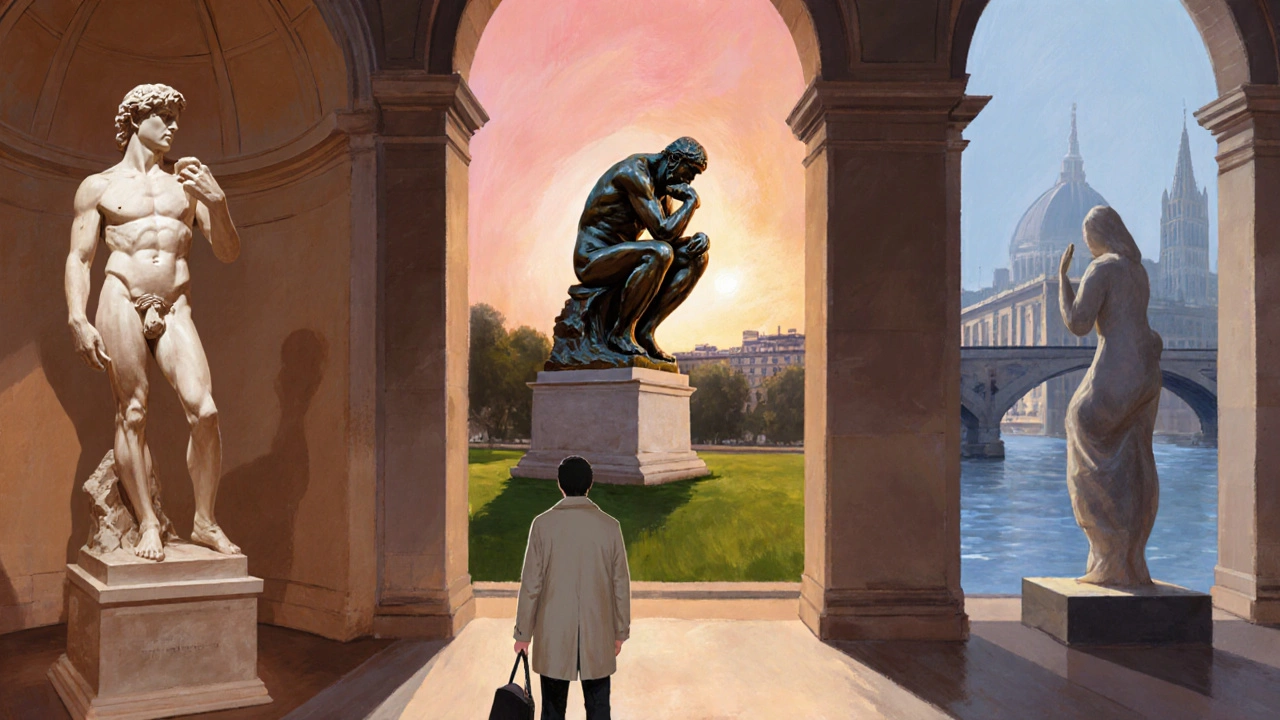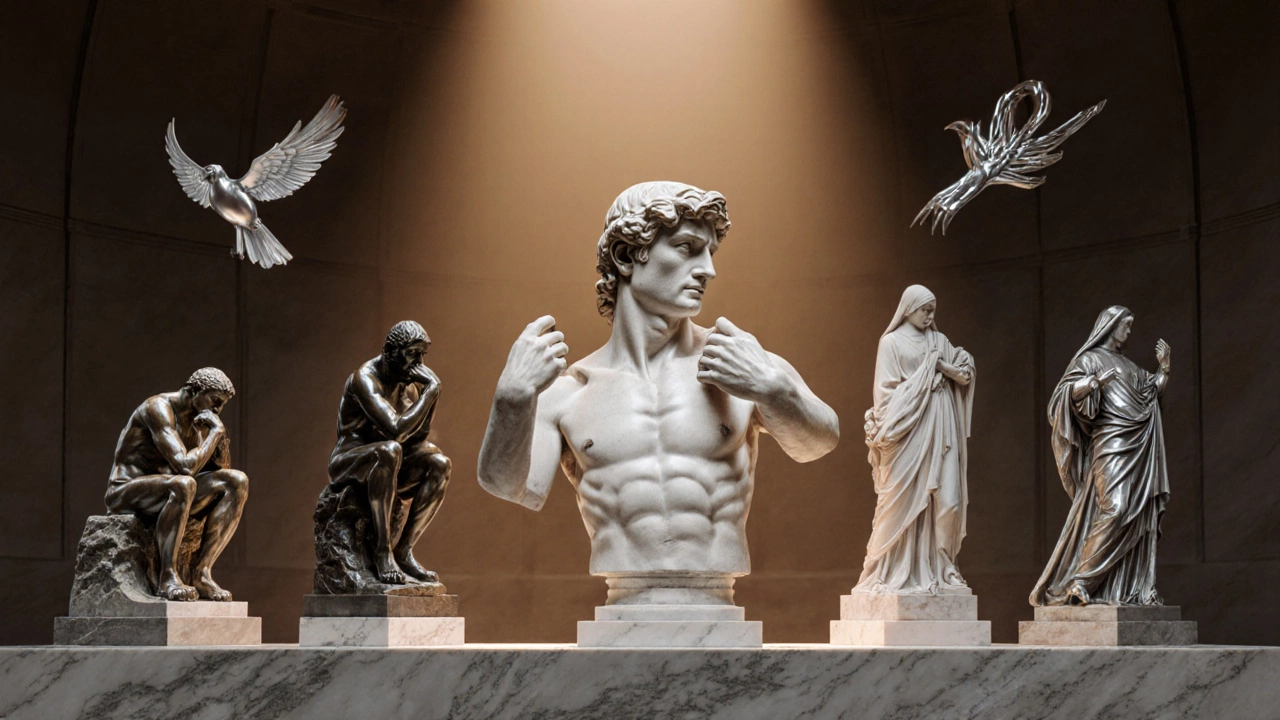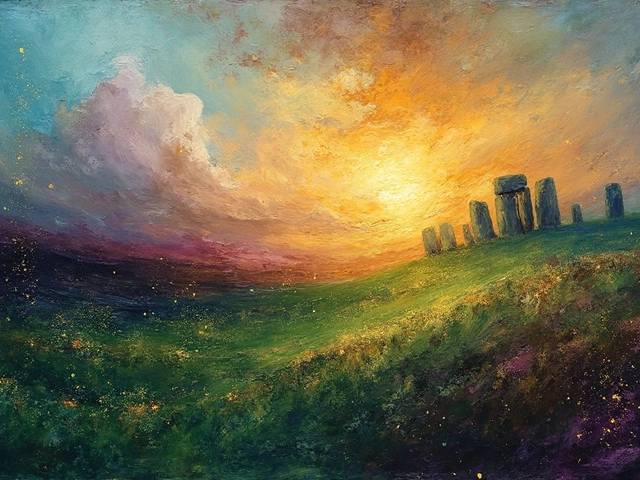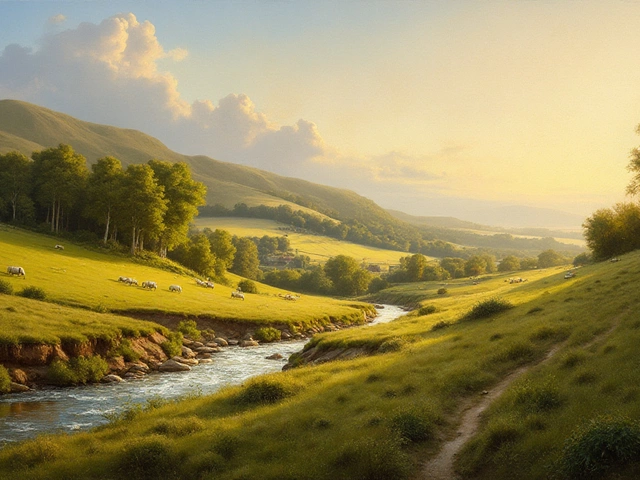Sculptor Ranking Calculator
Top Sculptors Based on Your Criteria
Scoring Breakdown
Art lovers have argued for centuries: who truly deserves the title of the best sculptor of all time? From marble wonders of the Renaissance to abstract steel forms of the 20th century, the debate spans styles, eras, and personal taste. This guide breaks down the criteria, ranks the most influential sculptors, and gives you a clear picture of why certain masters stand out.
Key Takeaways
- We rank sculptors using impact, technical mastery, innovation, and lasting influence.
- Michelangelo, Rodin, and Bernini top the list, each excelling in different eras.
- Modern pioneers like Henry Moore and Barbara Hepworth reshaped how we think about space and form.
- Choosing a "best" sculptor depends on what you value: realism, emotion, abstraction, or cultural relevance.
- Our comparison table lets you quickly spot each artist’s signature work and legacy.
How We Rank Sculptors
To keep the ranking fair, we used four measurable criteria:
- Historical Impact: Did the artist change the direction of sculpture in their time?
- Technical Mastery: How skillful were they with the medium-marble, bronze, wood, or mixed materials?
- Innovative Vision: Did they introduce new forms, techniques, or concepts?
- Enduring Legacy: Are their works still studied, exhibited, and referenced today?
Each sculptor receives a score out of 10 for every criterion, then we calculate a weighted average (Impact40%, Mastery30%, Innovation20%, Legacy10%). The higher the total, the stronger the claim to the "best" title.
Sculptor is an artist who creates three‑dimensional works by carving, modeling, or assembling materials such as stone, metal, wood, or clay.
Top Sculptors Ranked
Michelangelo was a Renaissance polymath whose marble masterpiece David set a new benchmark for anatomical precision and emotional intensity. Scoring 9.6 overall, he dominates the realism category, bridging the sacred and the human in ways that still inspire artists today.
Auguste Rodin is often called the "father of modern sculpture." His bronze group The Thinker captures raw psychological depth while pushing the limits of texture and unfinished surfaces. Rodin’s blend of realism and abstraction earned him a 9.4.
Gian Lorenzo Bernini defined the Baroque spirit with dynamic marble works like Ecstasy of Saint Teresa, where light, movement, and drama converge. He scores 9.2, especially for innovative spatial composition.
Donatello introduced perspective into sculpture, best seen in his bronze Saint George. His pioneering use of contrapposto earned him a solid 8.8.
Henry Moore transformed post‑war sculpture with organic, hollow forms such as Reclining Figure. His emphasis on negative space scores 8.6 for innovation.
Barbara Hepworth paired abstract geometry with natural materials, creating iconic pieces like Mother and Child. Her legacy in modernist abstraction adds up to an 8.5.
Constantin Brâncuși reduced forms to essential silhouettes; his Bird in Space series redefined what sculpture could convey. He ranks 8.4 for pure conceptual innovation.
Louise Bourgeois brought psychological depth to large‑scale installations, with works like Maman-a giant spider that confronts fear and motherhood. Her impact on contemporary art earns her an 8.3.
Comparison of the Top Sculptors
| Name | Era | Signature Work | Style | Legacy |
|---|---|---|---|---|
| Michelangelo | Renaissance (1475‑1564) | David (marble) | High‑realism, heroic | Set standards for anatomical precision |
| Auguste Rodin | Late‑19th/Early‑20thC. | The Thinker (bronze) | Expressive, textured | Paved way for modern figurative sculpture |
| Gian Lorenzo Bernini | Baroque (1598‑1680) | Ecstasy of Saint Teresa (marble) | Dramatic, theatrical | Defined Baroque spatial storytelling |
| Donatello | Early Renaissance (1386‑1466) | Saint George (bronze) | Naturalistic, early perspective | Introduced contrapposto to sculpture |
| Henry Moore | 20thC. (1898‑1986) | Reclining Figure (stone) | Organic, abstract | Championed sculpture as public art |
| Barbara Hepworth | 20thC. (1903‑1975) | Mother and Child (stone) | Simplified abstraction | Integrated landscape and form |
| Constantin Brâncuși | Modern (1876‑1957) | Bird in Space (bronze) | Essentialist, minimalist | Redefined sculpture as pure idea |
| Louise Bourgeois | Late 20thC. (1911‑2010) | Maman (steel) | Symbolic, installation | Opened dialogue on psycho‑social themes |
Best Sculptor for Different Interests
- Pure realism: Michelangelo - his anatomical accuracy is unmatched.
- Emotional drama: Bernini - every curve tells a story.
- Modern abstraction: Brâncuși - stripped‑down forms that speak volumes.
- Public monument inspiration: HenryMoore - his massive, hollow figures work in open spaces.
- Feminist or psychological exploration: LouiseBourgeois - confronts the subconscious.

Common Misconceptions
Many people think "best" means "most famous," but fame often follows impact, not the reverse. For example, Donatello is less household‑name than Michelangelo, yet his innovations in bronze casting laid groundwork for later masters. Likewise, some assume marble is superior; Rodin’s rough‑hewn bronze proves texture can convey feeling just as powerfully.
Another myth is that a sculptor must work alone. Bernini ran a bustling workshop, and Moore collaborated with architects and engineers to scale his pieces. Recognizing collaboration helps us appreciate the broader creative ecosystem.
Next Steps for Curious Readers
If you’re planning a museum visit, start with the "David" at the Accademia in Florence, then hop over to the Rodin Museum in Paris to experience the tactile contrast between marble and bronze. For contemporary inspiration, book tickets to the Tate Modern - both Moore and Hepworth have permanent installations there.
Want to try sculpting yourself? Begin with a simple clay study of a hand; the same gestures that Michelangelo practiced still teach the fundamentals of form, proportion, and tension.
Frequently Asked Questions
What criteria define the "best" sculptor?
We look at historical impact, technical mastery, innovative vision, and lasting legacy. A high score in all four areas signals an artist who reshaped the medium and continues to influence creators today.
Is Michelangelo always considered the #1 sculptor?
Michelangelo often tops the list because his work combines flawless anatomy, emotional depth, and a cultural footprint that spans centuries. However, "best" is subjective, and other rankings may prioritize modern innovation over classical realism.
Can a sculpture be considered great if it’s unfinished?
Yes. Rodin’s deliberately rough surfaces and Michelangelo’s famous "non‑finished" sketches show that leaving a piece partially raw can heighten emotional impact. The key is whether the unfinished state adds meaning.
How did women sculptors break into a male‑dominated field?
Artists like Barbara Hepworth and Louise Bourgeois leveraged education abroad, avant‑garde circles, and public commissions to gain visibility. Their distinct visual languages-organic abstraction and psychological symbolism-set them apart and opened doors for future generations.
Where can I see the works of these top sculptors in person?
Michelangelo’s David lives in Florence’s Accademia; Rodin’s The Thinker graces the Rodin Museum in Paris; Bernini’s masterpieces dominate Rome’s St. Peter’s Basilica and the Palazzo Barberini; Moore’s Reclining Figures are scattered across UK parks; Brâncuși’s Bird in Space can be found at the Museum of Modern Art, NewYork.



